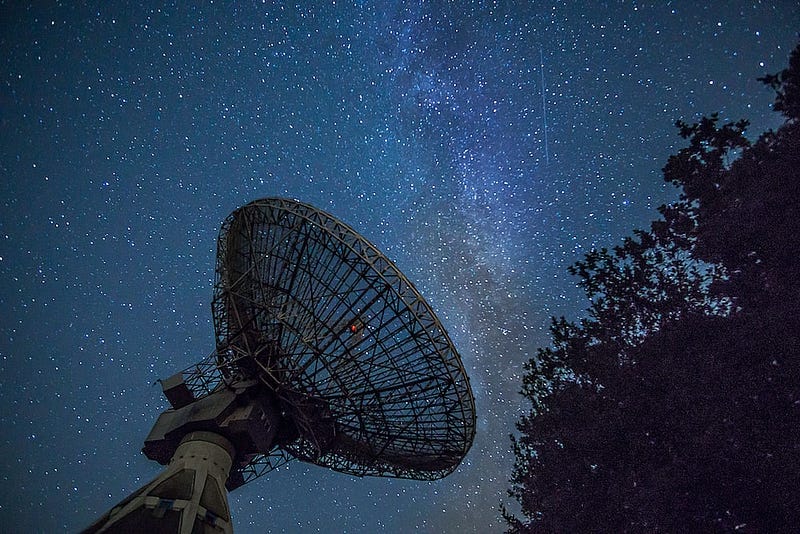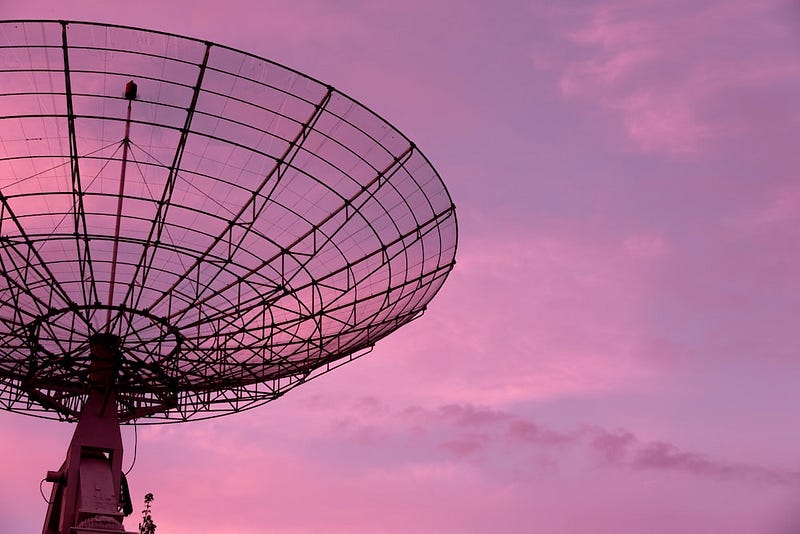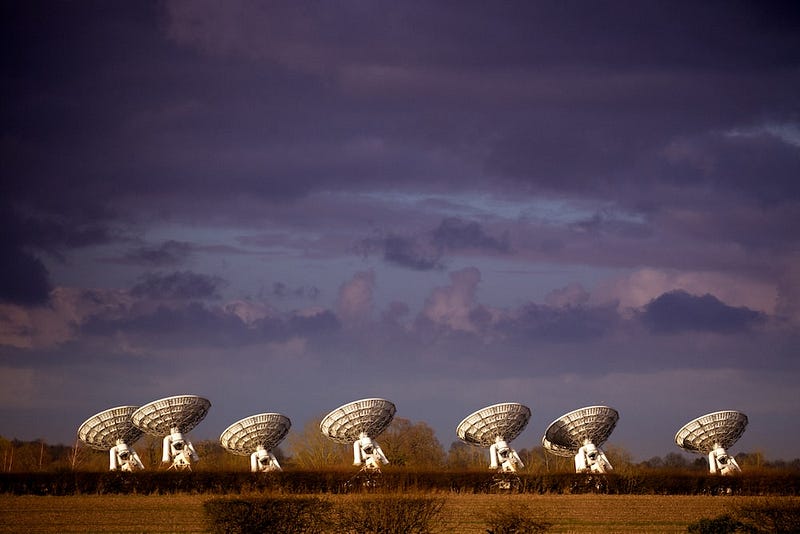Exploring the Role of A.I. in the Search for Extraterrestrial Life
Written on
Chapter 1: The Quest for Alien Intelligence
Artificial intelligence is revolutionizing life on Earth, but what if it also helps us uncover life on other planets? This intriguing concept is at the heart of a serious research initiative aimed at discovering extraterrestrial life. The Search for Extraterrestrial Intelligence (SETI) project is dedicated to answering the pivotal question: "Are we alone?" It seeks to do this by scanning the universe for signs of intelligent life, specifically through the detection of electronic signals, or "technosignatures." The primary method involves utilizing radio telescopes to analyze signals originating from space, which may be indicative of extraterrestrial technologies.
A recent paper published in Nature Astronomy elaborates on the intersection of artificial intelligence and the search for alien life. Franck Marchis, a planetary astronomer at the SETI Institute, emphasizes, “It is a new era for SETI research that is opening up thanks to machine-learning technology.”

Chapter 2: The Evolution of SETI
Founded by the renowned astronomer Frank Drake in 1960, the SETI project began with a telescope aimed at just two stars, hoping to catch radio signals. Initially, the initiative faced financial constraints, limiting its focus to a select few stars. However, significant changes occurred in 2015 when billionaire Yuri Milner provided substantial funding, allowing the project to expand its scope to observe one million stars in the Milky Way and nearby galaxies. This transformation enabled researchers to gather an unprecedented amount of data.
Stephen Hawking poignantly stated during the 2015 launch of the million-star project, “In an infinite Universe, there must be other life; there is no bigger question. It is time to commit to finding the answer.”
As the project progressed, the challenge shifted from data collection to signal differentiation. Sofia Sheikh, an astronomer with the SETI Institute, highlights, “The biggest challenge for us in looking for SETI signals is not at this point getting the data. The difficult part is differentiating signals from human or Earth technology from the kind of signals we’d be looking for from technology somewhere else out in the Galaxy.”
In 2019, a signal that initially appeared promising was ultimately revealed to be a false positive. Researchers face interference from terrestrial sources such as electronic devices, aircraft, and repeaters that emit signals in the same frequencies being analyzed.

Chapter 3: Overcoming Signal Interference
To minimize interferences, telescopes are typically located in areas with limited human activity. Despite these efforts, researchers still contend with radiofrequency interference (RFI) caused by human technology. The authors of a recent study point out, “Despite the fact that these radio telescopes are located in radio-quiet zones, radiofrequency interference (RFI) due to human technology still poses a major challenge for SETI research.”
The authors proposed employing deep learning techniques to filter out undesirable signals. They utilized a variational autoencoder to examine 115 million signal snippets gathered from telescopes, which amounts to 150 terabytes of data representing observations of 820 stars. This algorithm's output is then processed by a random forest model, trained to differentiate candidate signals from background noise. The design of the algorithm prioritizes interpretability.

Chapter 4: Harnessing Machine Learning for Discovery
The lead author of the study, an undergraduate student from the University of Toronto, mentioned that he combined unsupervised and supervised machine learning techniques to uncover hidden patterns in the data. He humorously noted, “I only told my team after the paper’s publication that this all started as a high-school project that wasn’t really appreciated by my teachers.”
Steve Croft, another author of the study, remarked, “The vast majority of the signals detected by our telescopes originate from our own technology — GPS satellites, mobile phones, and the like. Our algorithm gives us a more effective way to filter the haystack and find signals that have the characteristics we expect from technosignatures.”
To showcase the algorithm's effectiveness, it successfully identified the Voyager 1 signal, currently 20 million km away, after analyzing over 100 million signals and identifying eight signals of interest from nearby stars that could potentially indicate intelligent life.
Andrew Siemion cautions, “Any technosignature candidate needs to be confirmed; however, when we looked at these targets again with the Green Bank Telescope, the signals did not reappear.”

Chapter 5: Future Prospects and Implications
The authors do not make assumptions about the origins of the signals or whether they are from extraterrestrial sources. Instead, they encourage further examination by scientists. They aim to apply their methods to much larger datasets as they scale up to the full million-star project, confident that artificial intelligence will revolutionize astronomy.
Cherry NG, another author of the study, stated, “These results dramatically illustrate the power of applying modern machine learning and computer vision methods to data challenges in astronomy, resulting in both new detections and higher performance. Application of these techniques at scale will be transformational for radio technosignature science.”
While this study does not definitively answer the question of whether we are alone in the universe, it provides an additional tool to help us search the skies and ponder this existential inquiry. What are your thoughts? Feel free to share in the comments below.
The first video titled "How A.I. is searching for Aliens | The Age of A.I." explores the innovative use of AI in the search for extraterrestrial intelligence.
The second video, "SETI Live - AI + ET: Will Machine Learning Help Find Extraterrestrial Life?" discusses the implications of machine learning in the ongoing search for life beyond Earth.
For more insights, check out my other articles and feel free to subscribe for notifications on future posts. You can also connect with me on LinkedIn. If you find this content valuable, a clap or share would be appreciated! Additionally, here's my GitHub repository where I collect resources related to machine learning and artificial intelligence.
GitHub - SalvatoreRa/tutorial: Tutorials on machine learning, artificial intelligence, data science…